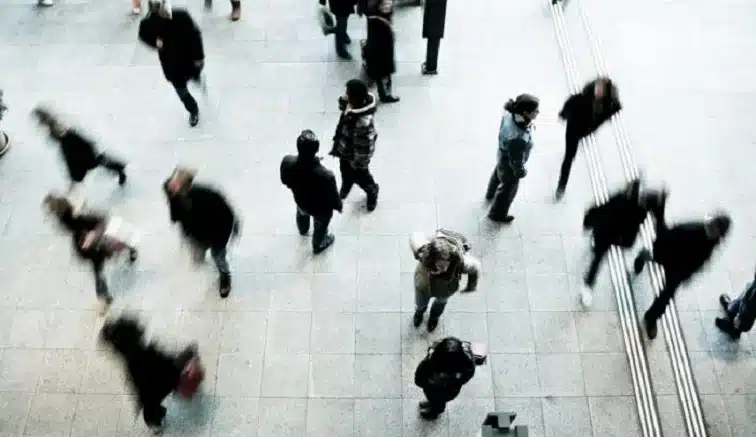Crowded cities, lonely people. Jisha Krishnan attempts to decipher the causes and consequences of urban loneliness, an epidemic that accelerates the risk of chronic physical and mental health problems as well as early death.
It’s hard to believe that anyone could be lonely or feel isolated in the city, surrounded by millions of people. But urban loneliness is real. And, it’s at the centre of a health epidemic.
Last year, in a much-publicised survey of more than 20,000 people, global health service company Cigna found that Americans in the 18-22 and 23-37 age groups are the loneliest. In fact, 46 per cent respondents reported feeling lonely. A UK survey found that children in cities are about four times lonelier than their counterparts in the countryside. Similar studies in France, Canada and Japan have thrown up disconcerting data.
While loneliness is not unique to cities, mental health experts affirm that it is increasingly becoming more of an urban phenomenon, triggering rising rates of chronic physical and mental ailments. “With the advent of capitalism and technology, loneliness is a natural outcome of development,” says Dr Shyam Bhat, MD – Internal Medicine & Psychiatry and Trustee, The Live Love Laugh Foundation (a non-profit organisation that deals with mental health issues in India).
A pioneering global study – meta-analysis of more than 3.4 million participants – indicates that loneliness increases the risk of early death by 30 per cent. According to the Cigna study, loneliness has the same impact on mortality as smoking 15 cigarettes a day! “Loneliness and weak social connections are associated with a reduction in lifespan similar to that caused by smoking 15 cigarettes a day and even greater than that associated with obesity,” wrote Dr Vivek H Murthy, former Surgeon General of the United States, in an article in the Harvard Business Review.
The diagnosis
Despite being a serious public health problem, loneliness is little-understood. “Because measuring loneliness is not as simple as measuring blood pressure or blood sugar levels. Loneliness is a state of emotion and our subjective interpretation of our lives,” explains Dr Debanjan Banerjee, Senior Resident – Department of Psychiatry, National Institute of Mental Health and Neurosciences (NIMHANS), Bengaluru.
In other words, people who have seemingly perfect lives – soaring careers, happy marriages, happening social circles – could be battling intense loneliness. Ask Kevin J, whose high-flying job got him from Chicago to India over a year ago. “I was suffering from chronic back pain for several months before I finally decided to see a doctor. I was hoping for some instant relief, but one thing led to another and before I knew it, I was in a therapist’s office, acknowledging a sense of deep emptiness and disconnection that have been my constant companions for a long time,” confides the 34-year-old, who is currently “learning healthy strategies” to cope with his loneliness.
The research
Several studies have established how loneliness can trigger chronic physical and mental disorders. From serious physical conditions like heart disease, stroke, cancer, diabetes and Alzheimer’s disease to psychiatric disorders like depression, anxiety and schizophrenia, the health impact of loneliness is well-documented.
A ground-breaking study at the University of Chicago used FMRI scans to find out if loneliness actually affects the working of a person’s brain. Researchers found that the ventral striatum, a region of the brain associated with rewards and critical to learning, is more activated in non-lonely people than in the lonely when they view pictures of people in pleasant settings. On the other hand, the temporoparietal junction, a region associated with taking the perspective of another person, is much less activated among the lonely than in the non-lonely when viewing pictures of people in unpleasant settings.
“Loneliness often affects us in ways that are hard to quantify,” affirms Dr Madhur Verma, Assistant Professor, Department of Community and Family Medicine, All India Institute of Medical Sciences (AIIMS), Bathinda. “There are times when I feel extremely lonely, perhaps because of the competitive environment,” admits the doctor who has been working on the psycho-social profile of the geriatric population living in rural areas of Punjab.
Urban-rural divide
According to a recent study by the University Of Minnesota School Of Public Health, people in rural areas reported less social isolation and more social relationships than urban residents. “Work in rural areas is more collaborative. Say farming, for instance. In India, we have the village panchayats that bind the residents together. There’s a greater sense of community…Sadly, that’s changing and loneliness is slowly percolating in rural areas too,” notes Dr Verma.
A thought-provoking survey conducted by the Pew Research Centre, a US-based think tank, sheds light on the nature of the urban-rural divide. While only 24 per cent of city dwellers reported knowing all or most of their neighbours, the corresponding number for those living in rural areas was over 40 per cent.
Sense of community is something that’s missing in contemporary urban life. Perhaps, that explains the growing popularity of co-working and co-living spaces in metropolises across the globe. “Humans have a fundamental longing for social connection. That’s the reason why older adults, post-retirement or after the children leave home (empty nest syndrome), typically, struggle with loneliness,” explains Dr Banerjee from NIMHANS.
Social media affliction
Does social media reinforce loneliness? Countless studies have shown that feelings of FOMO (fear of missing out), virtual isolation, unhappiness and envy, courtesy curated images of online friends and strangers on social media, are closely connected with the growing sense of aloneness.
“I actually thought of Facebook, Twitter and Instagram as effective ways of battling loneliness,” recalls Veena Mahesh, who claims to never spend more than an hour a day on social media. “Yet there was something unhealthy and vicious about scrolling compulsively through those social media feeds. It intensified my sense of isolation and social anxiety…I just didn’t feel like going out and meeting any people,” says the 22-year-old engineer, who was “fortunate to find a supportive counsellor” to help her “survive the turbulent time”.
Social media is to the mind what sugar is to the body, maintains Dr Bhat from The Live Love Laugh Foundation. “We need to keep both, sugar and social media, in check. With social media, there’s always the danger of pseudo-connection and toxicity. Many times, users may not even realise how lonely they are…These platforms are engineered to make them addictive. Users get hooked onto the brain stimulation. Since the influx of social media in 2012, suicide rates among youngsters has gone up globally,” reasons the mental health expert, who believes that schools should start teaching students to use social media more responsibly.
The way forward
More than two-thirds of the world is expected to live in cities by 2050. Urban loneliness, as a public health issue, is finally becoming a part of key conversations around the world. The UK government has appointed a Minister of Loneliness, while urban planners are discussing ways to design cities with friendlier public spaces to rekindle a sense of community among residents.
Singaporeans are gardening on shared plots of land to foster closer social bonds, while the Japanese have started “renting friends”. In Tokyo, customers are even paying to cuddle in the arms of strangers at cuddle cafes. “You can’t hire emotions,” cautions Dr Bhat, who is quick to point out that solitude is not the same as loneliness. “Solitude is the fact of being alone. I enjoy my solitude. Loneliness, on the other hand, is the longing for more closeness, intimacy, and contact,” he elucidates.
The first step, experts concur, is to be aware of loneliness as a health concern that demands attention. Healthcare workers need to be trained to diagnose and treat loneliness, alongside other illnesses. “The degree of loneliness is very high among medical professionals. It’s a good idea to have peer sessions, especially for mental health professionals, who become the reservoirs for their patients,” avers Dr Banerjee, who confesses to feeling “very lonely” on several days.
As an insightful article published in The Lancet last year put it, “Loneliness is a public health problem that can be largely solved in our lifetime but doing so will require the full engagement and support of the medical community. The physical health and mental health of a growing number of afflicted individuals and their families and friends are at stake.”

















